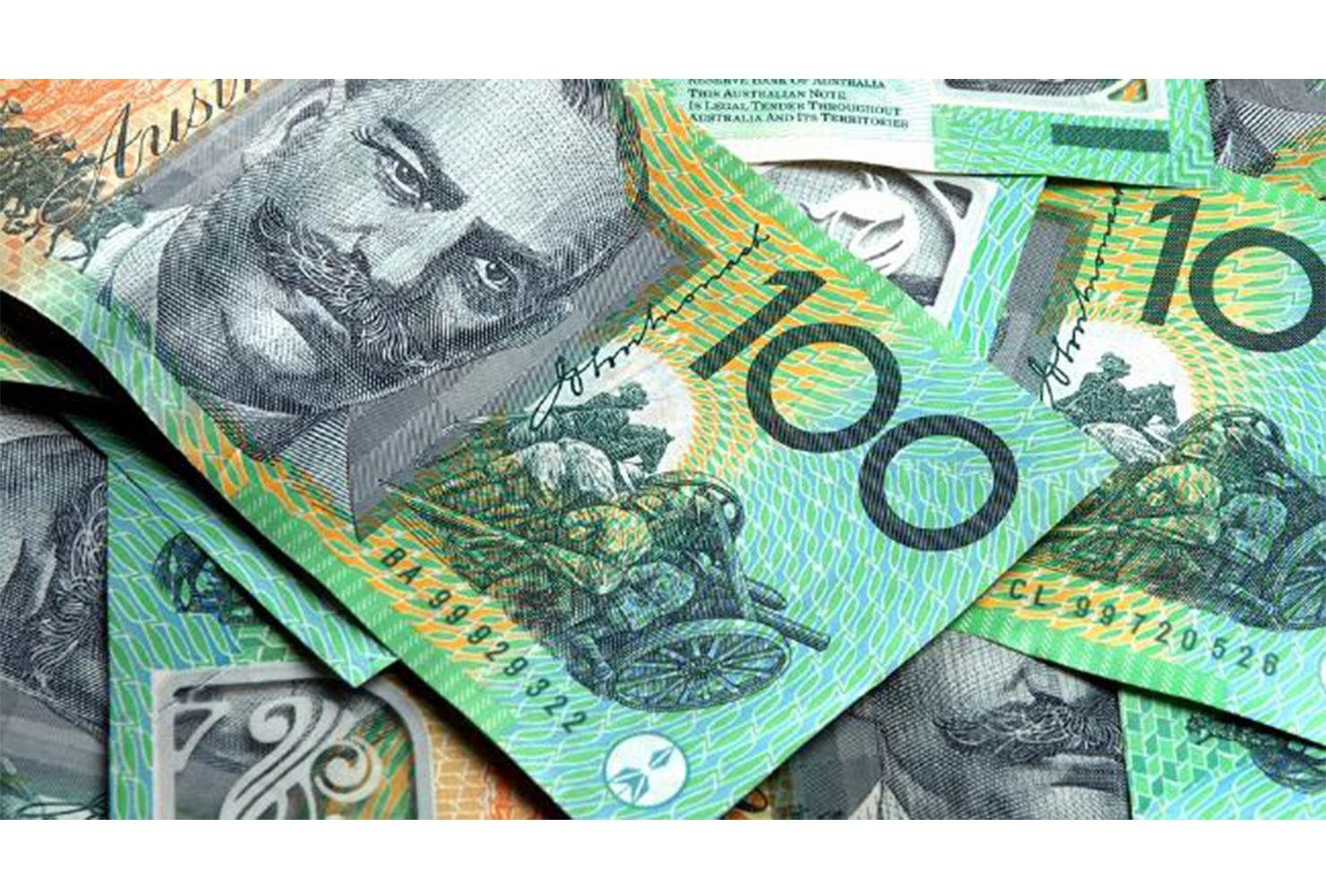Politicon.co
The role of Monetary Policy in Australia’s Economic Objectives and Composition of Exports

This paper aims to analyse the effects of monetary policy, a macroeconomic policy that is used to reach economic objectives such as lower unemployment, economic growth, and stable national currency and inflation (Iordachioaia, 2011). Indeed, several articles and books have emphasised the economic importance of monetary policy. The theoretical model of monetary policy is highlighted in “Principles of Macro Economics” by Nilss Olekalns, Robert Frank and Ben Bernanke, former Chair of Federal Reserve System of the United States. On the other hand, Wojciech Maliszewski and 12 other researchers in their paper “Resolving China’s Corporate Debt Problem” have provided the reasons for the Chinese economic downturn. Subsequently Australia’s Central Bank has reported how China’s economic situation has affected Australia’s exports and financial stability.
Nonetheless, the fact that Australia has reduced the risk of negative growth and changed the direction of its exports through monetary policy after the second mining boom, has been neglected.
Hence a question arises: ‘How has Australia’s use of monetary policy influenced economic activity in Australia and reduced the country’s dependence on mineral commodities in the post-mining period?’ It is crucial that economists consider this issue from the Australian perspective since Australia is a rare advanced economy that has managed 25 years without any recessions and its financial success could serve as an example to world economies (Dan Kopf, 2017). Nevertheless, as Jäger has suggested, there are capacity issues with the application of monetary policy as many countries have already lowered their interest rates to 0-0.5% following the Global Financial Crisis (Jäger & Theocharis, 2017). More often than not, a successful application of monetary policy is still possible in the countries where interest rates are as high as 10%. Thus, many commodity dependent economies such as Russia, Kazakhstan, United Arab Emirates (UAE) have experienced economic downturns in recent years, which suggests that they could take note of Australia’s economic policies and consider changing their direction of exports.
China’s large financial borrowing during the GFC helped the country evade the crisis and secure a strong economic growth for the following several years. However, as the aggregate debts became a heavier burden by reaching over 200% of the Chinese GDP, China’s fiscal capabilities were reduced meaning that the Chinese Government was no longer able to inject large funds into the economy. This has reduced economic activity in China, lowering the country’s economic growth by almost 1.5% in 2014 (Maliszewski et al., 2016).
Australia, along with other Asia Pacific states had benefited hugely from the high Chinese demand for its mineral commodities such as iron ore until 2014, an economic process that is also known as the ‘Second Mining Boom’. Considering iron ore accounted for 20% value of all Australian exports, the unexpected fall in Chinese demand and iron ore prices have left Australian economy with lower company taxes, lower GDP growth and recessionary pressures. This unexpected downturn has forced Australia to implement effective monetary policies in order to secure a stable economic growth, Australian Dollar and prevent unemployment from worsening (Reserve Bank of Australia, 2015).
The organisation that is responsible for Australia’s monetary policy is the Reserve Bank of Australia (RBA), whose main objectives include keeping inflation rate within a 2-3% band, maintaining full employment and a stable Australian dollar, all of which are reached by manipulation of interest rates. The RBA has targeted inflation within the aforementioned range, as it is sufficiently low and doesn’t cause economic distortions in the country. The RBA Board meets each month to decide whether a change to the stance of monetary policy is required. Before deciding on the stance of monetary policy, the RBA considers factors such as unemployment rate, business confidence, CAD, wages growth and other key economic indicators. To influence interest rates, the RBA participates in Domestic Market Operations (DMO), the process of buying and selling government bonds or Commonwealth Government Securities (CGS) in the overnight money market. In the OMM some commercial banks have insufficient funds in their exchange settlement accounts and have to borrow money from other banks, including the Reserve Bank. Therefore, the RBA will buy CGS to increase liquidity in the financial institutions’ exchange settlement accounts causing interest rates fall (Reserve Bank of Australia, 2016). It is noteworthy that between 2015 and 2016, following the end of the second mining boom, the RBA has lowered cash rates by 100 basis points from 2.5% to 1.5% (Reserve Bank of Australia, 2016).
Ben Bernanke and Robert Frank highlight that lower cash rates are equivalent to low cost of borrowing for consumers that encourage them to borrow more funds from banks to meet their consumption commitments. Furthermore, due to a lower cost of borrowing, consumers with existing loans obtain more disposable income to spend on goods and services. Since an increase in consumption is equivalent to an increase in GDP, this transition process is likely to result in higher economic growth and lower unemployment, which is evident in Australia’s case (Bernanke, Olekalns, & Frank, 2014, pp.233-243).
The recent changes in RBA’s cash rates contributed to the increase of Australia’s GDP Growth from 2% in July 2015 to 3.2% in July 2016. Not to mention the time lags between the RBA’s decision and unemployment rates, the unemployment rate in Australia fell from 6.3% percent to 5.7% during the same period (Trading Economics, 2016). The effect of loosening monetary could also be observed in investment figures. Firms are likely to expand their operations because the cost of borrowing is lower and there is more consumer demand for the goods and services that will cause them to hire more employees. (Bernanke, Olekalns, & Frank, 2014, pp. 233-243).This is evident in the business confidence index of Australia, that has reached 13% in 2017, which is a 12% increase since the adaptation of loosening monetary policy (Trading Economics, 2017). Increasing investment is another factor that has contributed to the falling unemployment rates as firms have hired more employees. As a result, the economic activity in Australia has grown contributing to the country’s GDP growth.
Theoretically, an increase in GDP results in higher inflation, because stronger demand for goods and services by consumers and lower unemployment are likely to lift wages and other costs up. Thus, there is a strong link between unemployment and inflation, highlighting that the Central Bank could reduce unemployment at the expense of rising inflation (Bernanke, Olekalns, & Frank, 2014, pp. 254-259). As an evidence, as Australia’s unemployment rate decreased from 6.3% to 5.4%, the inflation rate rose from 1.4% to 1.8% (Trading Economics, 2017). Nonetheless, the current inflation rate of 1.8% is below the RBA’s target range of 2-3% and doesn’t pose as a concern for the Central Bank.The main point of concern for the RBA however, is the fluctuating business cycle and a stable growth. GDP growth is one of the most important factors to determine a country’s economic stability, as reduction of poverty and cyclical unemployment is not possible without economic growth. A slowing economic growth could also worsen the country’s foreign debt situation which is considerably high.
Theoretically, a decrease in interest rates discourages foreign savings which could eventually lead to a depreciation of the Australian Dollar (Bernanke, Olekalns, & Frank, 2014, pp. 425-442). Additionally, following the second mining boom, the Australian Dollar has experienced a depreciation of 30% from USD1.1 to USD 0.76 with values as low as USD0.71 in 2016 (Trading Economics, 2017).
This depreciation may have several negative effects on the Australian firms and consumers. For instance, it could lead to higher imported inflation, as foreign products grow more expensive. As a result, Australian firms’ costs would increase significantly, since a large portion of raw materials is made in foreign countries. Due to the rise in the price of imports, consumers’ purchasing power would be reduced, leading to lower life standards. Furthermore, high import prices mean the given volume of exports buy a smaller amount of imports, leading to a decrease in the terms of trade index.
Nevertheless, looking at the statistics, the depreciated Australian Dollar has improved the economy’s overall performance by altering Australia’s composition of exports from mineral commodities to services. On this ground, cheaper Australian Dollar makes it less expensive for foreigners to utilise Australian goods and services, thus increasing the economy’s international competitiveness (Bernanke, Olekalns, & Frank, 2014, pp. 425-442). This is evident from the data provided by the government organisations of Australia. For instance, the International education sector expanded by 8% between the fiscal years of 2015 and 2016, hitting a record value of 20.3 billion dollars (Universities Australia, 2016). Subsequently, the Trade Minister of Australia has noted that there was a 29% raise in the tourism sector between 2014 and 2017 (Minister for Trade, Tourism and Investment., 2017).
Although statistics prove that there have been significant improvements in Australia’s services sector, the fact that Australia Dollar has risen from 0.71 USD to 0.76 USD between 2016 and 2017 is another evidence of the change in economy’s composition of exports (Trading Economics, 2017). The appreciation of the currency proves that the economic activity in the country is accelerating and that there is higher demand for the currency. For the reasons stated above, it is in the best interests of the Reserve Bank of Australia to keep the Australian dollar’s exchange rate at around the level of USD 0.70.
All in all, the paper has found the key reason for the economic downturn in China and to what extent it has affected the Australian economy. We found that the Reserve Bank of Australia, through lowering the cash rate, has been successful in increasing consumption and investment in the economy, which has promoted economic growth. On that basis, the main argument was based on the role of the depreciated Australian Dollar on Australia’s composition of exports and reduction of the dependence on China, all of which have been rendered by an effective application of monetary policy.
Although the Central Bank’s monetary policy is very effective in stabilising growth, unemployment and the Australian dollar, it is noteworthy that the economic policy pursued conflicts with other aspects such as Australia’s worsening environmental problem. The increased economic activity in Australia tends to pollute the environment, and the RBA has little control over the damage done to the environment. Therefore, monetary policy is often called “blunt instrument” that has unintended consequences (Glenn Stevens, 2010).
References
Bernanke, B., Olekalns, N., & Frank, R. (2014). Principles of Macroeconomics. Chapter 8: The Reserve Bank and the economy, pp 233-243
Bernanke, B., Olekalns, N., & Frank, R. (2014). Principles of Macroeconomics. Chapter 9: The Aggregate Demand-Aggregate supply model, pp 254-259
Bernanke, B., Olekalns, N., & Frank, R. (2014). Principles of Macroeconomics. Chapter 15: Exchange Rates and the Open Economy, pp 425-442
Dan Kopf. (2017). Australia’s economy is on a 25-year winning streak, and China will determine how much longer it goes.
Retrieved from
https://qz.com/author/dkopfqz/
Glenn Stevens. (2010). Monetary Policy and the Regions.
Retrieved from:
https://www.rba.gov.au/speeches/2010/sp-gov-200910.html
Iordachioaia Adelina-Geanina. (2017). Monetary Policy and Economic Policy.
Retrieved from
https://econpapers.repec.org/article/sppjkmeit/1113.htm
Jäger, J. & Grigoriadis, T. (2017). The effectiveness of the ECB’s unconventional monetary policy: Comparative evidence from crisis and non-crisis Euro-area countries.
Retrieved from
http://www.sciencedirect.com/science/article/pii/S0261560617301420#!
Maliszewski et al. (2016). IMF Working Paper: Resolving China’s Debt Problem.
Retrieved from:
https://www.imf.org/external/pubs/ft/wp/2016/wp16203.pdf
Minister for Trade, Tourism and Investment. (2017). International tourists loving regional Australia.
Retrieved from:
http://trademinister.gov.au/releases/Pages/2017/sc_mr_170607.aspx
Reserve Bank of Australia. (2016. About Monetary Policy.
Retrieved from:
https://www.rba.gov.au/monetary-policy/about.html#the_implementation_of_monetary_policy
Reserve Bank of Australia. (2015). Box A: The Effects of Changes in Iron Ore Prices.
Retrieved from:
https://www.rba.gov.au/publications/smp/2015/feb/box-a.html
Reserve Bank of Australia. (2016). Interest Rate Decisions – 2016.
Retrieved from:
http://www.rba.gov.au/monetary-policy/int-rate-decisions/2016/
Trading Economics. (2017). Australia Business Confidence.
Retrieved from:
https://tradingeconomics.com/australia/business-confidence
Trading Economics. (2017). Australian Dollar.
Retrieved from:
https://tradingeconomics.com/australia/currency
Trading Economics. (2017). Australia GDP Annual Growth Rate.
Retrieved from:
https://tradingeconomics.com/australia/gdp-growth
Trading Economics. (2017). Australia Inflation Rate.
Retrieved from:
https://tradingeconomics.com/australia/inflation-cpi
Trading Economics. (2017). Australia Unemployment Rate.
Retrieved from:
https://tradingeconomics.com/australia/unemployment-rate
Universities Australia. (2016). International education generates a record $20.3 billion for Australia.
![]()
- TAGS :
- Economy
- Monetary policy
- Australia
- TOPICS :
- Economy
- REGIONS :
- East Asia and Pacific








jpg-1599133320.jpg)
